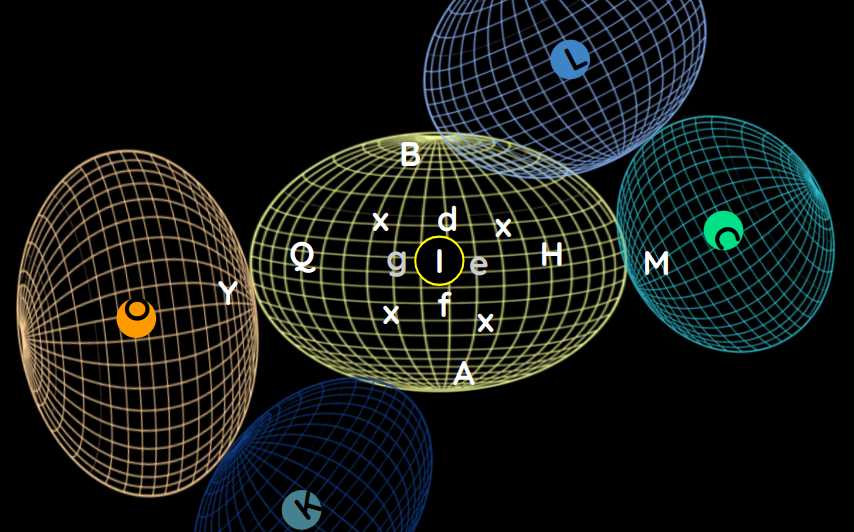The Gradual Disappearance of Stars
Table of Contents
Superphysics Note
112. Description of a Star Gradually Disappearing
If this spot becomes so thin and decompressed that it dissolves due to the fire-aether spreading over its outer surface, Star I will not easily disappear again afterward.

For this to occur, a new spot would need to envelop it completely again.
But if it is too thick to dissolve in this manner, its outer surface will become denser due to the impact of the matter surrounding it.
Meanwhile, if the causes that previously diminished the force with which the matter of vortex O tends towards I change and this force increases, the matter of vortex I will be pushed back from P towards Y.
Consequently, the fire-aether spread over the spot defg will decrease. New spots will simultaneously form on its surface, gradually dimming its light.
If this persists, these new spots will completely obscure the light. They will occupy all the space of the fire-aether.
As the globules of Vortex I at its outer circumference APBM are more compressed than usual, they will also compress those at the inner circumference xx.
These inner globules are pressed and interwoven with the branched particles of the aether which we mentioned forming around stars. They will not easily allow the striated particles and other not extremely fine particles of the fire-aether spread over the spot defg to pass through.
Thus, they will easily congregate into spots there.
113. Many Channels Excavated by Virtual Photons in All Spots
Virtual Photons continuously:
- excavate channels for themselves in the crusts of all these spots
- pass through all of them as if through a single spot.
These spots are formed from the fire-aether particles.
This is why they are initially very soft, providing an easy path for the virtual photons.
This cannot be said for the surrounding ether.
Its thicker particles retain some traces of these channels because they are generated from the dissolution of spots.
But they do not always maintain the same position due to following the motion of air-aether globules.
Therefore, they do not easily admit the virtual photons moving straight through them.
114. The Same Star Can Appear and Disappear in Turns
The same fixed star can appear and disappear in turns, being enveloped in a new vortex of spots each time it appears.
Such alternation is very familiar to nature in moving bodies, so that when they are impelled by some cause towards a certain limit, they do not stop there but continue beyond it until they are repelled back by another cause.
Thus, when a weight hanging on a rope descends from one side to its perpendicular position due to gravity, it gains momentum that carries it beyond that perpendicular to the opposite side, until gravity, overcoming that momentum, moves it back towards the perpendicular, and a new momentum arises.
Similarly, when a vessel is once set in motion, the liquid contained in it moves back and forth many times before coming to rest.
Thus, when all celestial vortices are in a certain equilibrium, the matter of one vortex can repeatedly move now in one direction, now in the opposite, before coming to rest.
115. The possibility of the entire vortex containing a star being destroyed
It is also possible for the entire vortex containing such a fixed star to be absorbed by surrounding vortices. Its star can be taken into one of these vortices and transformed into a planet or comet.
Only 2 causes prevent vortices from being destroyed by others:
- One cause, which consists in the matter of one vortex being impeded by the presence of neighboring vortices from spreading towards another, does not apply universally.
For example, if the air-aether of vortex S is pressed on both sides by vortex L and N to prevent it from proceeding further towards D, it cannot similarly be prevented by vortex D from spreading towards L and N, nor by any others except those closest to it in proportion to their size.
Therefore, it does not apply to the very closest vortices.
- The other cause, which is that the matter of the first element forming the star in the center of each vortex repels the globules of the second element surrounding it towards other neighboring vortices, applies to all those vortices whose stars are not enveloped by spots.
But the intervention of denser spots negates this cause, especially those spots that are mutually overlapping like multiple layers.